SOME ENERGY COMPANIES SAY CHANGE IS IN THE AIR

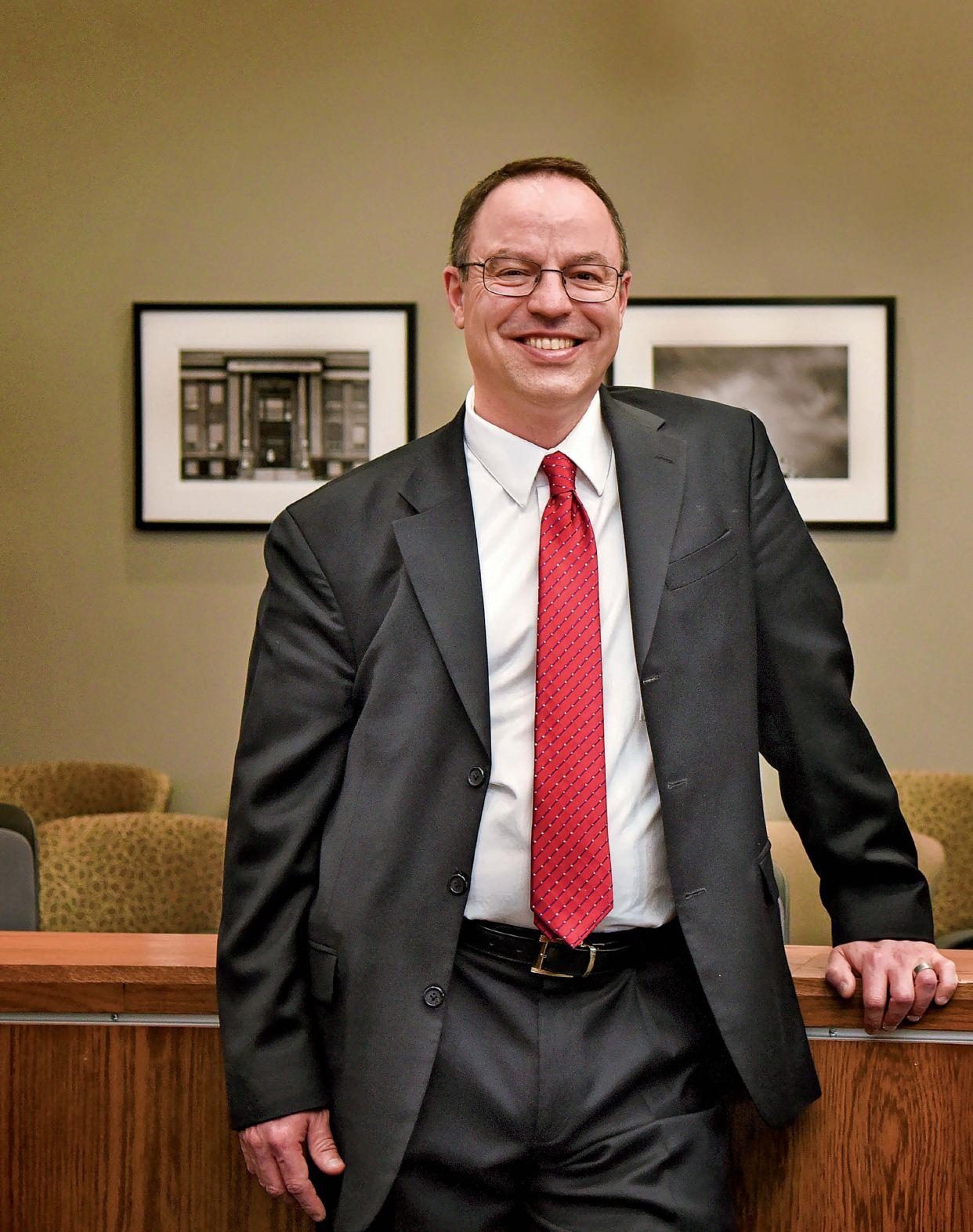
PAGE 14
WESTERN DAKOTA TECH WELCOMES LIVESTOCK ON CAMPUS FOR AG MANAGEMENT PROGRAM
PAGE 20
Practicing
PREMIER BUSINESS MAGAZINE OF THE NORTHERN PLAINS | JANUARY 2021
law in the virtual Courtroom PAGE 10
PrairieNews MONTH YEAR VOL ?? ISSUE ?? Midco.com/Enterprise Internet . Networking. Data Center. Phone. Your networking needs are one of a kind, not one of exactly the same.
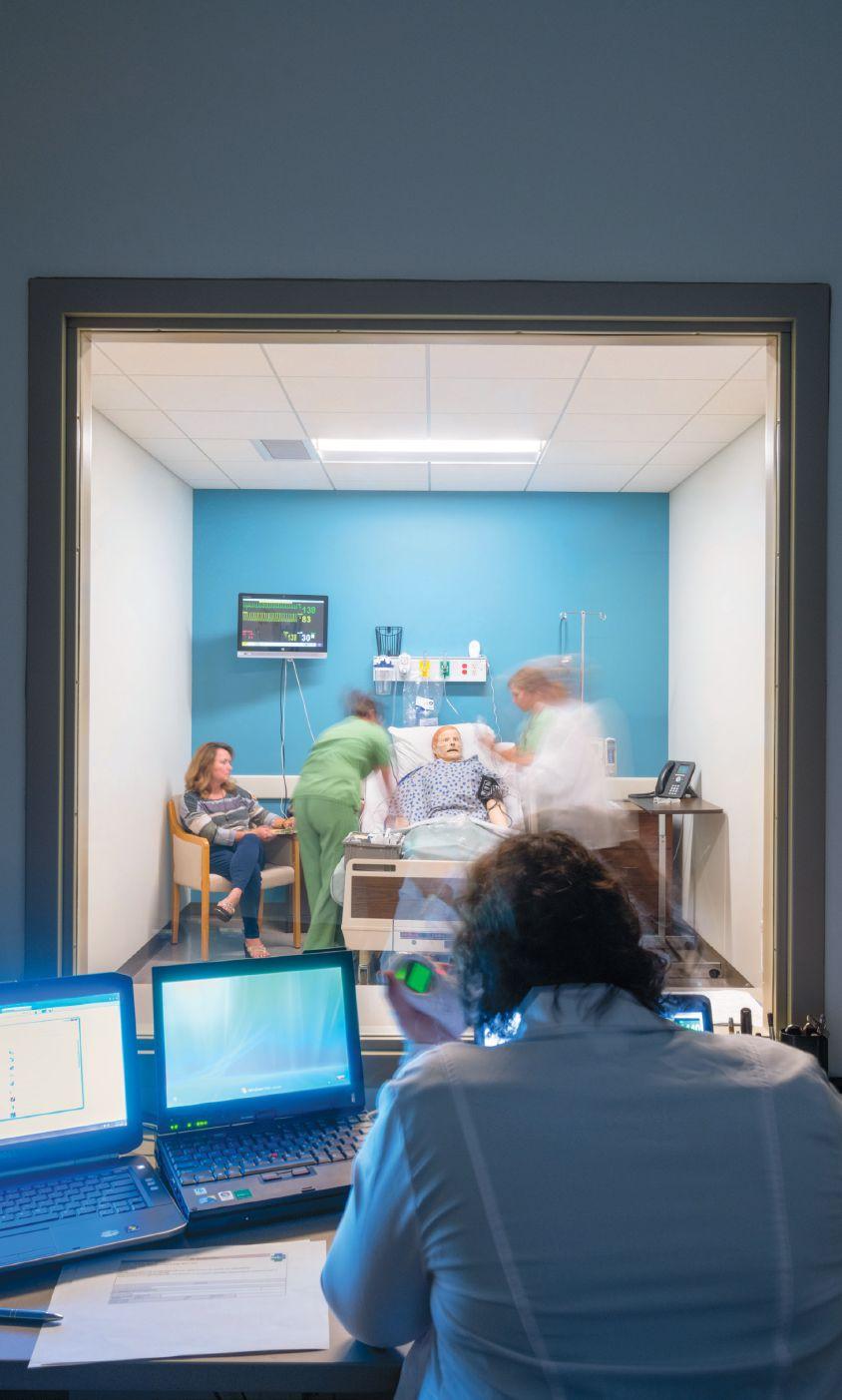







PrairieNews MONTH YEAR VOL ?? ISSUE ?? bremer.com ©202 1BremerFinancial Corp oration. Allrightsreser ve d. Bremerand Bremer Bankareregis tere dservice marksofBremer FinancialC orporation. Le t’ssee what we candotogether. Talk to aBremerbanker today. Confidenceisn’t about knowingexactlywhat yourday’sgoing to bring. It ’s ab outknowing you’re readytohandleit.
rity ca n lead to st ress, lowered produc tivity, and ot her issues foryour employees. Introduc ing MY AL ERUS, an on line financial gu idance tool that ca n help your employees ma ke better financial decisions. Whet her it is savi ng for reti rement, ma ki nga plan to reduce debt, or ma xi mi zi ng health savi ngs benefits— your employees ca n now ta ke cont

Theenergyindustr yiscomplexand ever-changing.Bet ween regulationsandpotentialincentiveprograms,there’salotto keepupwith. Ateamof experiencedadvisorsbyyourside can help youmakeconfidentdecisionsand keep yourfocus onwhatmatters—growing yourbusiness.


5 Fi na nc ia l
St ar t yo ur co mp an y’s pa th to fi na nc ia l co nf iden ce at Al er us .com . LE SS ST RE SS , MOR E CO NF ID EN CE .
insecu
rolof thei r financial futu re
SLOW ING GROWING 701.255.10 91 | ei debaill y.co m/indust ries/energ y-se rv ices
TO CAPITALIZE ON THESE TRENDS.
AS A SENIOR TRANSPORTATION PROJECT MANAGER FOR BOLTON & MENK, BITTNER WILL SERVE A KEY ROLE IN THE STRATEGIC VISIONING OF THE FIRM’S TRANSPORTATION SERVICES. WITH THE TOOLS AVAILABLE TO SUPPORT HIM, HE WILL ADVANCE TRANSPORTATION TECHNOLOGY FOR THE FUTURE.


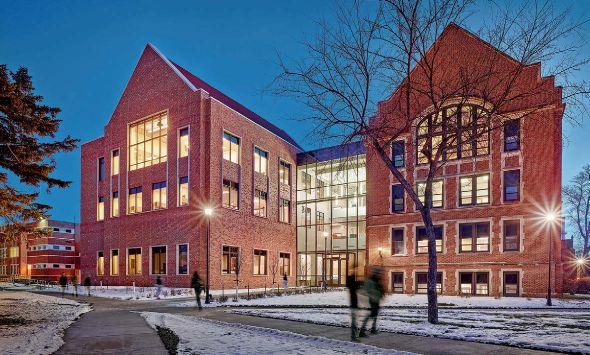
TABLEOFcontents JANUARY 2021 VOL 22 ISSUE 1 DEPARTMENTS FEATURES WAYS TECHNOLOGY HAS IMPACTED LAW SCHOOLS, PRIVATE PRACTICES AND COURTROOMS BY ANDREW WEEKS 10 Virtual Justice COLLEGES AND UNIVERSITIES ARE USING NEW TECHNOLOGY TO TRAIN THE NEXT CROP OF AG WORKERS BY ANDREW WEEKS 16 Farming with Technology IMAGE: COURTESY OF UND SCHOOL OF LAW MIKE MCGINNISS, DEAN AND PROFESSOR AT THE UNIVERSITY OF NORTH DAKOTA SCHOOL OF LAW IN GRAND FORKS, N.D., POSES FOR A PHOTO INSIDE OF A COURTROOM. COURTESY OF UND SCHOOL OF LAW ON THE COVER: 8 Editor’S NOTE SILVER LININGS BY ANDREW WEEKS 28 INSIGHTS & INTUITION 19 investments N.D. INSURANCE COMMISSIONER PROPOSES IN-STATE LEGACY FUND INVESTMENTS BY ANDREW WEEKS 21 Guest Column HACKS TO ACCELERATE YOUR CAREER BY WCCO BELTING INC. 22 Construction corner KODABANK BRANCHES INTO GRAND FORKS, N.D. BY ANDREW WEEKS B&T MANUFACTURING LOOKS TO FUTURE GROWTH WITH NEW FACILITY BY ANDREW WEEKS 20 Ag management LEARNING WITH LIVESTOCK BY ANDREW WEEKS 13 NDSU Architecture NDSU COMBINES CREATIVE PROGRAMS TO FORM SCHOOL OF DESIGN, ARCHITECTURE & ART BY PRAIRIE BUSINESS 26 Prairie people 24 Prairie News 30 BY THE NUMBERS prairie person VISIT WWW.PRAIRIEBUSINESSMAGAZINE.COM TO SEE THESE AND OTHER NEW HIRES, PROMOTIONS AND AWARD WINNERS IN THE REGION. BOLTON & MENK WELCOMES NEW SENIOR TRANSPORTATION PROJECT MANAGER FARGO, N.D. •
MIKE BITTNER HAS A GENUINE LOVE OF BUILDING RELATIONSHIPS AND AN AFFINITY FOR INNOVATION. THROUGHOUT HIS 10-YEAR CAREER, HE HAS DEVELOPED A LONG LIST OF ACCOMPLISHMENTS WORKING IN SEVEN DIFFERENT STATES FOR CLIENTS INCLUDING DOTS, CITIES, COUNTIES, METROPOLITAN PLANNING ORGANIZATIONS AND PRIVATE ENTITIES. HE FOCUSES ON IDENTIFYING EMERGING TRENDS AND STAYING NIMBLE ENOUGH
CHANGE IS IN THE AIR FOR SOME ENERGY COMPANIES BY SAM EASTER / SPECIAL FOR PRAIRIE BUSINESS 6 TWITTER.COM/PRAIRIEBIZ FACEBOOK.COM/PRAIRIEBUSINESS PRAIRIEBUSINESSMAGAZINE.COM
14 Coal vs Wind
SPONSORSHIPS aredesigned to assistbusinesseswith RECRUITING and RETAINING qualifiedemployees inindustriesthatare experiencinga workforce shortage.
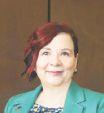








Sponsors formanagreementwithacurrent orfutureNDSCS studentthatprovides financialsupport forthe student’s education, in return forfutureemploymentwiththe sponsor.

To bematchedwithafutureemployeeand learnmoreabout StudentSponsorships, visitusonline. NDSCS.edu/Sponsorships

WHO WILL MAKE THE LIST IN 2021?
Prairie Business magazine is accepting nominations for our annual Top 25 Women in Business. We’re seeking those women who are making big moves and leading the way in their careers and communities.
If you know a great candidate for this coveted list, go to prairiebusinessmagazine.com and click on the Top 25 Women in Business logo to submit a nomination.





















15, 2021.


7 25 WOMEN IN BUSINESS TOP 2020 THISYEAR’S TOP25 PAGE20 TOURISM’SECONOMICIMPACT INTHEUPPERMIDWEST PAGE12 THENUMBEROFBUSINESSWOMEN WHOTRAVELISTRENDINGUPWARD PAGE16 PREMIERBUSINESSMAGAZINEOFTHENORTHERNPLAINS |MARCH2020
2021
URNEXTEMPLOY EE
Nominations accepted through January
SPONSOR YO
Silver Linings
At the start of every year many people – myself included – evaluate the previous year to see how they measured up and to revisit or set goals.
The evaluation and goal-setting may be different this time. The lens in which we review the past year, for instance, is through the murky glass of the coronavirus pandemic. We cannot blame ourselves for some of the goals not achieved, the places not visited, the family and friends not seen, and the business successes that were not attained in 2020. We blame the pandemic.
The impact it has had on many people and their livelihoods took centerstage; and many are still adjusting to restrictions. Looking ahead, we may wonder what goals should be set for the new year when we’re still in the midst of a pandemic.
I get it, and have harbored similar thoughts – until a friend, practicing social distancing and wearing a mask, stood at my doorstep one evening bearing a Christmas gift.
During our socially-distanced conversation he referred to the nationwide progress of the vaccination against COVID-19, saying it was a “silver lining” amid many months of uncertainty.
I found myself so focused on the daily COVID numbers broadcast and printed in the news that I hadn’t looked at the bigger picture of where we are now, how far we have come, until that moment. The impact of that simple phrase, “silver lining,” made me start looking to the new year through yet a different lens. This one of hope.
The dictionary describes the word “resolution” as being “a firm decision to do or not do something,” and as “the quality of being determined or resolute.”
Despite the challenges the pandemic has caused for a great many people, I have seen many people tackle the pandemic with determination and the decision to make the best of an unwelcome situation.
Some silver linings from the business world are the restaurant owners who have stepped up to help their communities by offering discounts and, in some cases, free meals for health care workers; regional architects and designers who continue to explore new ways to design buildings for a post-pandemic world; the many businesses large and small that have adopted new ways of doing things to still connect with their clients, customers and students; and the companies, mine included, that have looked for ways to adjust and remain relevant without foregoing their most valuable asset, their employees.
Times have been tough – and they still are – but as time marches on things will get better. Silver linings are all around us if we look for them, and they can give us hope. For those business professionals in the region who color the gloom with silver, thank you. As another friend used to tell me, “Keep on keeping on!”
Until next time, Andrew Weeks
I look forward to hearing from you at aweeks@prairiebusinessmagazine.com or 701-780-1276.
PUBLISHER
KORRIE WENZEL
AD DIRECTOR STACI LORD
EDITOR
ANDREW WEEKS
CIRCULATION MANAGER BETH BOHLMAN
LAYOUT DESIGN JAMIE HOYEM
ACCOUNT MANAGER
NICHOLE ERTMAN 800.477.6572 ext. 1162 nertman@prairiebusinessmagazine.com
Prairie Business magazine is published monthly by the Grand Forks Herald and Forum Communications Company with offices at 375 2nd Avenue North, Grand Forks, ND 58203. Subscriptions are available free of charge. Back issue quantities are limited and subject to availability ($2/copy prepaid). The opinions of writers featured in Prairie Business are their own. Unsolicited manuscripts, photographs, artwork are encouraged but will not be returned without a self-addressed, stamped envelope.
SUBSCRIPTIONS
Subscriptions are free www.prairiebusinessmagazine.com
ADDRESS CORRECTIONS
Prairie Business magazine Box 6008 Grand Forks, ND 58206-6008
Beth Bohlman: bbohlman@prairiebusinessmagazine.com
ONLINE www.prairiebusinessmagazine.com

8 TWITTER.COM/PRAIRIEBIZ FACEBOOK.COM/PRAIRIEBUSINESS PRAIRIEBUSINESSMAGAZINE.COM Editor’snote Andrew Weeks Editor
JANUARY 2021 VOL 22 ISSUE 1
PROUD MEMBERS OF OUR COMMUNITY







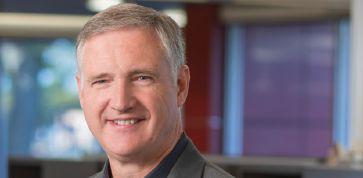


9 sdstate .edu / precision-ag “The future is brightinprecision ag.” FirstofitsKind Agronomy + Technology + DataScience = PrecisionAg SDSUPrecisionAgAdFNLqxp.qxp_Layout112/15/204:49PMPage1
www.undeerc.org ENERGY & ENVIRONMENTAL RESEARCH CENTER Our multidisciplinary team of over 200 provides practical, pioneering solutions to the world’s energy and environmental challenges. Chamber Membership Directory AD 8 2018.indd 2 8/16/2018 12:51:09 PM
Virtual Justice
Ways technology has impacted law schools, private practices and courtrooms
By Andrew Weeks
Years ago while a senior in high school, Robert Keogh wrote a paper that won an award after catching the attention of the State Bar Association of North Dakota.
At the time young Keogh didn’t know what he wanted to pursue as a career, but his award-winning paper got him thinking about the possibility of a law profession. Later, while a student at North Dakota State University in Fargo, he read a book by trial lawyer Louis Nizer, which piqued his interest even further.
After graduating from NDSU, he decided to follow his growing interest and enrolled at the University of North Dakota School of Law in Grand Forks, graduating in 1971. He’s been in private practice ever since.

While much has changed over the past 50 years, he remains committed to serving the law and bringing justice to those who deserve it.
One of the more obvious changes is that law offices today, especially in light of the pandemic, often rely on virtual meetings and other technology, whereas back when he opened his practice there wasn’t even the internet to make such things possible.
“It is different than when I went to law school,” he said. “It was all books back then. Everything was in a book, and it always made a great picture to have a lawyer in a big library with books; you had them over your desk. … It’s not that way anymore. Of course there’s a library at the law school, but students use so much computer technology right away, something I never did.”
Something else that’s different: There wasn’t a pandemic back then like there is today, which has only accelerated these technology trends.
Conducting the business of law in a digital setting is not necessarily Keogh’s favorite thing to do – “there’s nothing like meeting in person as far as I’m concerned,” he said; nor was it preferable to many other attorneys before the pandemic. But since March 2020 when the coronavirus pandemic was declared, many law offices have adopted the practice and found its benefits. ***
Keogh and his three-member team make up the Robert A. Keogh Law Office in Dickinson, N.D. Like other small-town attorneys, he juggles a number of practice areas: bankruptcy, business and corporate law, estate planning and probate, family law and divorce, and real estate. In recent times, when in-person visits are not possible because of the coronavirus, he has turned to Zoom and other technology to connect with those seeking professional legal counsel.
Keogh, who also serves as a municipal judge, said the pandemic hit the courts hard and many of them, including his own courtroom, have turned to conducting some hearings virtually.
“I never closed my office one single day during the pandemic, but we definitely noticed a slowdown in traffic,” he said. “And the court system really slowed down. ... Cases were being delayed and so everything got really set back. I’m not sure we’re fully caught up now. And of course, now we’re having a resurgence of cases.”
Specifically, he said, a number of mediation cases, especially over the past six to eight months, have been conducted by Zoom. These types of meetings, while beneficial during the pandemic, are not ideal for the judge who may want to pass a document to someone in court. They also make it tough for the judge to discern people’s full-body language. But even the federal court system has shifted to virtual hearings, many courts providing the public and news media online access to the criminal proceedings.
There might be some bumps going forward, but Keogh said virtual hearings likely will continue to be accepted in courtrooms even after the pandemic ends.
“I think that will continue,” he said, noting it will be easier for people to call in when they’re not feeling well and cannot physically make it to court. “That might be very helpful. We have the technology to do that … and I think there’s going to be more and more of that.”
OF UND
OF LAW 10 TWITTER.COM/PRAIRIEBIZ FACEBOOK.COM/PRAIRIEBUSINESS PRAIRIEBUSINESSMAGAZINE.COM
MIKE MCGINNISS, DEAN AND PROFESSOR AT THE UND SCHOOL OF LAW, POSES FOR A PHOTO INSIDE
A COURTROOM. IMAGES: COURTESY
SCHOOL
Law JANUARY 2021 VOL 22 ISSUE 1
But what does virtual technology mean for the future of private practice? Is it paving the way for more permanent virtual law practices? Perhaps, according to the University of Southern California School of Law, which said legal jobs are ranked No. 6 for the largest representation of telecommuters and that the number of virtual law practices continue to rise. The benefits of having a virtual office include, among other benefits, using cloud-based software to manage information that can be accessed anywhere and, in some cases, practicing attorneys not having a physical office at all, which means no overhead costs. About 5% of all lawyers and 9% of solo practitioners work virtually, according to the report.
Perhaps the biggest marker of the continuing trend is that the up-and-coming legal professionals, those who are still in school, are learning how to conduct the business of law virtually, providing them the know-how to jumpstart their careers in this fashion once they graduate.
***
Students at the University of North Dakota School of Law, for instance, are being introduced to the new ways of practicing law, including how they complete their intern- and externships.
Through its Rural Justice Program, UND students are placed in rural law firms to gain onsite experience. While the school has a long and positive working history with local courts and firms to make this happen, this past summer saw students complete their obligations remotely, according to Mike McGinniss, dean and professor at the UND School of Law. Instead of going onsite to tutor in an office setting, students met with legal teams through a computer monitor.
It was both beneficial and challenging.
Typically, students do not have direct contact with clients during their internship and externship because they are not licensed to practice, but they may work with a lawyer or meet with a client while the attorney is present. They often do research and draft documents, “those kinds of behind-the-scenes work,” McGinniss said. “Those types of things tend to lend themselves to work that could be done from home or a remote location.”
That is not necessarily ideal, however, because the office attorneys and staff do not get to know the student like they would if the student
were in the office; likewise, the student does not have the advantage of experiencing the day-to-day atmosphere of a legal office.
“It may be a little harder to have that sort of relationship building, but I think it does at least create one more option that firms may look to in the future instead of having someone travel to the site and spend the summer there,” McGinniss said.
Despite the benefits, it might not be in the best interest of students if law offices continue to have them meet virtually instead of in person after the pandemic. McGinniss said there is nothing quite like getting the in-office experience.
“I think this may end up having some repercussions in the future,” he said. “They (students) had to adapt to what they would otherwise do in person … but I think what we may see is that some of these offices may see what can be done remotely” and adopt it long-term.
continued on page 12
UND SCHOOL OF LAW FIRST-YEAR STUDENTS ATTEND CLASS SOCIALLY DISTANCED AND WEARING FACE COVERINGS. THE CLASS OF 82 STUDENTS WAS SPLIT INTO FOUR SECTIONS TO ACCOMMODATE IN-PERSON CLASSES THIS FALL.


11
STUDENTS SEAN KRAUT AND ERICKA MULLER MORAN OBJECT TO A QUESTION BY OPPOSING COUNSEL DURING THE FINAL TRIAL IN TRIAL ADVOCACY.
continued From page 11
“I’m not sure so much about the courts, but firms may decide that it’s a viable option for them. If someone isn’t necessarily in a position to physically travel to work, they may still connect with them using the remote technology.”
UND School of Law first-year students attend class in rooms where social distance is practiced and face coverings are used. The class of 82 students this fall was split into four sections to accommodate in person classes. Students also participate in mock court trials, some of it using technology.

Skyler Johnson, an estate planner with Sage Legal in East Grand Forks, Minn., previously told Prairie Business that she had been using technology to connect with clients virtually for several years. That might have been her niche before the pandemic, she said, but now that other law firms have adopted the virtual technology, realizing it wasn’t as difficult to use in their field as many had suspected, she is looking for her new niche.
Indeed, as Forbes said in a January 2020 article – a couple of months before the pandemic was declared – the legal sector had only recently undergone the digital transformation that other industries already have gone through. Also, “because it’s very document-intensive, it’s actually an industry poised to benefit greatly from what technology can offer.” The pandemic has only accelerated the trend.
Tomorrow’s lawyers, according to the article, will be the people who “develop new ways of solving legal problems with the support of technology.”
McGinniss said the law school remains focused on the future and helping prepare students to meet its challenges and demands.
As in the past, it does this in part by applying for grants through the Edson and Margaret Larsen Foundation. Money from the foundation helps provide scholarships for incoming law students and provides opportunities for students to work in rural law offices as part of the Rural Justice Program.
McGinniss said the school was recently approved for another year’s grant, and it couldn’t be more thankful.
“The reward varies a bit from year to year, but we’re really excited they have supported us,” he said. “We’re really grateful for their support ... especially when you’re entering into what may be challenging economic times ahead, having that extra support makes all the difference for our students.”
He hopes students in the program will be back in physical offices this summer.
Keogh said he would enjoy spending a weekend with McGinniss to see firsthand what it is like in law school, because he’s far removed from that arena these days. However, he does offer some advice for those considering a career in the legal profession:
“Pay attention to real life,” Keogh said. “You’ve got to focus on your studies, but really pay attention to what’s going on in the legal field and the world around you, because there is so much going on and it can be learned. When you get out of school and look for a job, I mean, it’s good to have some exposure to the world beyond law school.”
12 TWITTER.COM/PRAIRIEBIZ FACEBOOK.COM/PRAIRIEBUSINESS PRAIRIEBUSINESSMAGAZINE.COM Law JANUARY 2021 VOL 22 ISSUE 1
***
PROFESSOR DENITSA MAVROVA HEINRICH TEACHES HER TRIAL ADVOCACY CLASS WITH COVID-19 SAFETY PRECAUTIONS IN PLACE.
ANDREW
PRAIRIE
AWEEKS@PRAIRIEBUSINESSMAGAZINE.COM 701-780-1276 | @PB_ANDREWWEEKS
WEEKS
BUSINESS EDITOR
NDSU combines creative programs to form school of design, architecture and art
 By Prairie Business
By Prairie Business
FARGO, N.D. • North Dakota State University this fall combined three creative programs into one school.
The university’s architecture, landscape architecture, and visual art departments were combined to form the NDSU School of Design, Architecture and Art.
The new school allows the university to be a leader in the region by strategically capitalizing on design and design thinking, according to the school.
“This is a great opportunity for us to combine 100 years of design excellence in architecture with emerging new design fields to create a powerhouse of design thinking,” David Bertolini, dean of the College of Arts, Humanities and Social Sciences said in a news statement. “The new school will disrupt current design education practices to provide valuable careers to benefit the state and the region.”
The new school has more than 500 students, according to NDSU, including 70 graduate students pursuing degrees in the three founding departments. All three departments have had significant enrollment increases the past four years.
The school also said it pans to form affiliations and create more opportunities to work with campus partners such as the Nice Center for entrepreneurship. Others may include apparel, merchandising, interior design, and hospitality management; and strategic communications and advertising.
Opportunities to work with complimentary disciplines and faculty members in mechanical engineering, public history, civil engineering, construction management and others also are being explored. The university said these affiliations and partnerships are a key component to expanding opportunities for students and faculty in both the school and across the campus.
“There is not a discipline on campus where the school is not a potential partner,” said Michael Strand, school director and professor of art.
“Design plus anything is possible and is a key to bringing innovative solutions to both challenges and opportunities we have today.”
NDSU said it has the only architecture and landscape architecture programs in North Dakota, and that as such it helps position the school as a destination for design and art education.

Program enhancements, such as shared facility, new programs, diversified experience for students and increased research capacity through interdisciplinary approaches, are goals of the new school.
“The impact of design and art is everywhere,” Strand said. “With more than 50 years of collective experience supporting a vibrant learning community of 500-plus students in unparalleled shared faculties within the region, we are thrilled to come together as a school to inspire efforts across disciplines to reimagine and create thriving and healthy communities.”
13
THIS STOCK IMAGE FROM NORTH DAKOTA STATE UNIVERSITY SHOWS STUDENTS WORKING ON AN ARCHITECTURE PROJECT AT THE UNIVERSITY. NDSU RECENTLY COMBINED ITS ARCHITECTURE PROGRAMS AND VISUAL ARTS DEPARTMENT TO CREATE THE NDSU SCHOOL OF DESIGN, ARCHITECTURE AND ART. IMAGE: COURTESY OF NDSU
DAVID BERTOLINI, DEAN OF THE NDSU’S COLLEGE OF ARTS, HUMANITIES AND SOCIAL SCIENCES SAID COMBINING THE UNIVERSITY’S ARCHITECTURE PROGRAMS AND VISUAL ARTS DEPARTMENT WILL ‘PROVIDE VALUABLE CAREERS TO BENEFIT THE STATE AND THE REGION.’ A STUDENT IS PICTURED HERE WORKING ON AN ART PROJECT. IMAGE: COURTESY OF NDSU
Coal vs Wind Some energy companies say change is in the air
By Sam Easter / Special for Prairie Business
Larry Thomas, the city commission president in Washburn, N.D., has been in the community his entire life, barely 10 minutes down the road from the hulking smokestacks of Coal Creek Station.
Coal Creek is just one of a constellation of coal plants – and mines – that dot western North Dakota, all behemoths in their own right, all rumbling to the rhythm of the black rock that powers both the electrical grid and the day-to-day life of places like Washburn. Without them, the community wouldn’t be the same.
“It’s huge,” Thomas said of the local coal industry. “There’s a lot of people that live here that work for the power plant. A lot of people that work for them, and a lot of businesses rely on that industry as well. I know it would really hurt a lot of businesses if they were to shut down.”
But Coal Creek is on a political fault line that’s running through the energy industry, dividing coal and the future: Cheap natural gas and environmental regulations are slowly running old coal out of business. Coal Creek’s owners, the Minnesota-based Great River Energy, announced their intention to close the plant earlier this year as the company invests more in wind and natural gas power. White picket windmills now dot the rural landscape throughout the upper Midwest.
The communities of central North Dakota have known, for years, that change is in the air. Renewable energy, and especially wind, has blossomed across North Dakota in recent years. Nationwide wind energy production rose more than 300% from 2009 to 2019, according to the U.S. Department of Energy. Over the same time period, national coal output dropped 45%.
Andy Buntrock, the director of strategic planning and communications for Basin Electric Power Cooperative, headquartered in Bismarck, pointed out that the company’s portfolio included about 11% renewables in 2000. In 2019, it rose to about 26% and continues to grow.
It’s not quite time to throw coal out, though, which makes up about half of Basin’s portfolio. Buntrock pointed out that coal stations are long-term assets that can still earn back value. And in any conversation about electric power there’s talk of the “base load” – being able to supply a steady stream of electrons to keep the lights on, even when the wind isn’t blowing or the sun isn’t shining. With today’s technology, that means coal and natural gas are a necessity.
There’s a degree of local politics to renewable projects, too. Washburn’s McLean County has been remarkably unreceptive to renewable projects, using zoning laws to block potential windmills earlier this year and has put a moratorium on solar projects as well. That’s perhaps no surprise, given the local interest in coal.

But Ladd Erickson, the McLean County state’s attorney, said it’s part of efforts to preserve the landscape for tourism and for coal mining; he’s previously described it as a deterrent to land speculators, too. It also represents the community’s faith in coal power, he said, which supplies the critical base-load power that renewables still can’t.
Erickson frames it up this way: the best way forward is with coal in the conversation, made clean with emerging technologies that drastically reduce coal plant emissions and, supported – not supplanted – by renewables.
THE PRAIRIEWINDS 1 AND MINOT WIND PROJECTS, OWNED AND OPERATED BY BASIN ELECTRIC POWER COOPERATIVE, ARE LOCATED SOUTH OF MINOT, N.D. PRAIRIEWINDS 1, WHICH WENT INTO OPERATION IN LATE 2009, INCLUDES 77 1.5-MW TURBINES. IT IS LOCATED DIRECTLY ADJACENT TO MINOT WIND, WHICH CONSISTS OF TWO 1.3-MW TURBINES BUILT IN 2002 AND THREE 1.5-MW TURBINES BUILT IN 2009. THE 122 MWS OF POWER FROM THE TURBINES FLOW TO BASIN ELECTRIC’S CUSTOMERS THROUGH AN INTERCONNECTION WITH WESTERN AREA POWER ADMINISTRATION’S TRANSMISSION SYSTEM.
IMAGE: COURTESY OF BASIC ELECTRIC POWER COOPERATIVE
14 TWITTER.COM/PRAIRIEBIZ FACEBOOK.COM/PRAIRIEBUSINESS PRAIRIEBUSINESSMAGAZINE.COM
Energy JANUARY 2021 VOL 22 ISSUE 1
It’s a long shot that coal is profitable long-term, but he’s holding out hope that the right market shifts make it happen.
“The concept of replacing a viable lignite operation with renewables is a dead loser for North Dakota and the Midwest,” he argues.
Follow the Money
John Weeda is the president of the North Dakota Transmission Authority. He points out that the biggest roadblock to more wind energy in North Dakota is the power grid. It’s simply not developed enough to handle more big installations, and that means hopeful developers often face whopping costs for installation, discouraging more investment.
This is not just a North Dakota problem. South Dakota Wind Energy Association President Jennifer Stalley said it’s the biggest obstacle in her state, too. Bloomberg Businessweek summed up the problem neatly in late November, arguing that the energy of the future will run on exactly the kind of rural power lines that the prairie doesn’t yet have: “High-Voltage Power Lines Are Ugly, and the U.S. Needs More,” the headline read.
That’s part of the conversation around Coal Creek Station, too, because the power plant is linked to an enormous transmission line that’s also implicated in any future sale. Weeda said Great River has received offers for both the plant and the line and the transmission line by itself – a valuable piece of infrastructure that sends electricity to Minnesota.
That means the future could take Coal Creek and its power line almost anywhere, Weeda said. It could mean Coal Creek gets fit with new technology that makes it cleaner (not unlike MinnKota Power Cooperative is trying at nearby Milton R. Young Station, not far from Washburn and Coal Creek).
“I don’t consider it a fork (in the road),” Weeda said of any future sale. “North Dakota is about all of the above. And I think as we
evolve, we just evolve into what the market supports. The old saying — follow the money … Let’s use our resources to the best possible (ends). It’s going to be a combination of things.”

A spokesperson for Great River Energy declined to comment on any potential sale, citing non-disclosure agreements.
And despite the McLean County state’s attorney’s pessimism, there’s ongoing research on technologies that could make renewables more viable soon, say experts at the University of North Dakota’s Energy and Environmental Research Center. Tom Erickson, who oversees the exploratory research at the institute, and Brad Stevens, a senior research engineer spoke at length about the future of energy – especially wind – in a November interview. They pointed out that high-tech battery research continues to evolve. That’s the kind of new technology that could render coal’s baseload power argument moot.
Whatever the future brings, Thomas isn’t concerned. There’s been rumblings for months that the plant has interested buyers, and that means the proverbial show probably goes on – at least for now
“I think there are some people around that really hate wind, just for the fact that it takes away their coal jobs,” Thomas said. “But as far as I’m concerned, we need all types of energy.”
15 KLJENG.COM Ev olve d. Perfectly designedtothriveinitsenvironment. Adaptableenoughtoevolvewiththetimes. Buildingsmar tfor asolidfuture.It’ssecond natureatKLJ.
Higher Education
Farming with Technology
Colleges and universities are using new technology to train the next crop of ag workers
 By Andrew Weeks
By Andrew Weeks
VERMILLION, S.D. • When he drives along Interstate 29 in South Dakota, KC Santosh views the expansive fields of corn and, like clockwork, his mind turns to the future of agriculture.
That future has him a bit concerned. As the newer crop of ag producers moves away from the family homestead in search of better opportunities elsewhere, Santosh wonders how the life expectancy of the regional farm operation can be extended.
He’s found one answer: artificial intelligence.
Santosh, chair and associate professor of the Department of Computer Science at the University of South Dakota, has been instrumental in developing an AI program at the school, which he says will start next fall and will benefit not only ag students but those in other programs.
“If we have that much space to grow,” he said, referring to the expansive open lands of the region, “and that much space in which to produce, then we should think a little bit smarter” about managing agriculture.
Smarter is using new technology, he said, including artificial intelligence.
“With AI-driven tools, we aim to improve users’ experience,” he said. “That ultimately brings sustainable solutions for a variety of applications, such as health sciences, biology, and risk management. With thorough data analysis, AI-driven tools help predict, visualize, and decide.”
The program aims to educate young ag producers on the tools they need to make farming a viable industry now and in the future; it
also is to entice local talent to stay home instead of moving to other regions and states.
“We haven’t changed that much, and so our citizens are moving away, meaning we should be technology-driven so they come back,” he said.
Santosh has been at the university since 2015. When he approached the university about developing the AI program, the school could have said no. If that were the case, things would remain as they have been. That’s not necessarily a bad thing, but nothing would have changed for the better.
With AI, a lot will change. It will benefit students by allowing them to better capture and analyze data, including comparisons to historical values; improve processes; and provide more ways for them to be efficient farmers, among a host of other benefits.
Drones and other autonomous tools will play a part in the program.
“Sending drones, having different sensing devices like crop monitoring, is one of the important things,” he said, noting that students will use AI to better capture and analyze data so they know where the best place on a farm is to plant and harvest; it will detect drylands and take soil temperature and other readings.
He said regional farmers who adopt AI will better ensure their farm has a longer life expectancy. Having the rising generation of local ag producers learn these new technologies in school will be a boon to the industry.
It’s not too late for the school or farmers to start using AI, Santosh said, but time is of the essence because of advancing technology and
16 TWITTER.COM/PRAIRIEBIZ FACEBOOK.COM/PRAIRIEBUSINESS PRAIRIEBUSINESSMAGAZINE.COM
JANUARY 2021 VOL 22 ISSUE 1
MEGHANN JARCHOW, CHAIR AND ASSOCIATE PROFESSOR OF THE DEPARTMENT OF SUSTAINABILITY & ENVIRONMENT AT THE UNIVERSITY OF SOUTH DAKOTA, ANALYZES A CROP NEAR THE CAMPUS IN VERMILLION, S.D. IMAGE: COURTESY OF UNIVERSITY OF SOUTH DAKOTA
the current challenges facing the ag industry. Adopting AI will help them to make better decisions about the future of their farm and, in return, allow them to make more money off their product.
Santosh said today’s need is “sustainable agriculture,” meaning less effort but more production. “It is important to have a game changer,” he said, “understanding data, understanding the form lines, because different landscapes, different modalities, different models will come up. … These are all considerations that farmers and ranchers have to consider going forward.”
Eventually, the department will work with other departments at the school.
Meghann Jarchow, chair and associate professor of the university’s Department of Sustainability & Environment, said her department will collaborate with the AI program and looks forward to that effort. It will further benefit students in precision agriculture, a topic of study in her department.
Students there look at spatial analysis, another boon for ag workers and environment workers to gauge and measure land space. In the case of the farmer, this allows them to better plot and plan their growing areas.
“The idea of precision agriculture has been around for a bit,” she said, “but now the idea of precision conservation has kind of come with it.”
She said segments of a property may not be profitable for farming, and newer technologies help producers better determine what land might be best for which types of use.
“If it’s a pothole of wetlands that always floods and you chronically lose money on that, for instance, there could be a lot of value, certainly environmentally, for putting in some other use,” she said. “But there are also economic benefits by taking it out of row-crop production.
I think there’s increasing recognition of the importance of that.”
She said her program is working toward training students on drone use and data analytics, similar to what the AI program will do.
“You can get tremendous information about the landscape, about crops, at a level that you just couldn’t in the past,” she said. “Farmers could either get the certification and get the equipment to do it themselves or hire people to do it for them so that they can get a much more detailed look at their crops, or the land they own in general, and then can make decisions on a spatial scale that they couldn’t make in the past. … We’re working on making sure we’re training students on these technologies and data sets and how they can incorporate that into software so they can make sense of it.”
Santosh said the AI program will launch next fall, but this spring the school plans to do outreach to better educate the community about the new program. It also is trying to secure a grant from the national Science Foundation to keep the program running.
Students farther north, at North Dakota State College of Science in Wahpeton, N.D., also are learning various topics of agriculture, including two of those most in demand: agronomy and precision agriculture, said Craig Zimprich, chair of the school’s Department of Agriculture.
Like the University of South Dakota, NDSCS uses new technology, including drones and other data collection tools, to educate students. But a deeper learning comes at the other end of that – data analysis, something that will become even more in demand in the ag industry.
Zimprich, who has been with the school for more than a decade, said about 90 first- and second-year students are enrolled in the school’s ag program.
continued on page 18
TANNER HALL, A STUDENT IN THE DEPARTMENT OF SUSTAINABILITY & ENVIRONMENT AT THE UNIVERSITY OF SOUTH DAKOTA, IS SEEN DOING LAB WORK AT THE SCHOOL. IMAGE: COURTESY OF UNIVERSITY OF SOUTH DAKOTA

17
Higher Education
continued From page 17
It is taught by four faculty members, with another three who work more on the financial side of ag at the college’s three campuses in Fargo, Jamestown and Wahpeton.

He said ag workers remain in demand in North Dakota, giving students the opportunity to find their niche in the industry. Graduating with tech-savvy skills and know-how will be a boon for them and their careers.

“It hasn’t changed a lot since I’ve been here,” he said about the job market. “We’ve always had 100% placement every year. It’s not getting any more difficult to get a job. A big concern is will there be enough people to fill the jobs that are open? There is a lot of opportunity, and I mean a lot of opportunity for quality jobs.”
ANDREW WEEKS PRAIRIE BUSINESS EDITOR AWEEKS@PRAIRIEBUSINESSMAGAZINE.COM
701-780-1276 | @PB_ANDREWWEEKS
18 TWITTER.COM/PRAIRIEBIZ FACEBOOK.COM/PRAIRIEBUSINESS PRAIRIEBUSINESSMAGAZINE.COM
JANUARY 2021 VOL 22 ISSUE 1
CRAIG ZIMPRICH, ASSOCIATE PROFESSOR AND CHAIR OF THE NDSCS AGRICULTURE DEPARTMENT, IS PICTURED WITH STUDENTS USING A DRONE. IMAGE: COURTESY OF NORTH DAKOTA STATE COLLEGE OF SCIENCE
MEGHANN JARCHOW, CHAIR AND ASSOCIATE PROFESSOR OF THE DEPARTMENT OF SUSTAINABILITY & ENVIRONMENT AT THE UNIVERSITY OF SOUTH DAKOTA, VISITS WITH STUDENTS TANNER HALL AND JAMES ROBERTSON DURING A PROJECT AT THE SCHOOL IN VERMILLION, S.D.
IMAGE: COURTESY OF UNIVERSITY OF SOUTH DAKOTA
N.D. insurance commissioner proposes in-state Legacy Fund investments
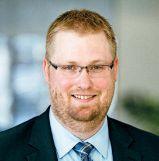 By Andrew Weeks
By Andrew Weeks
BISMARCK, N.D. • North Dakota has some $7 billion in its Legacy Fund, but most of it is invested almost entirely outside of the state.
Jon Godfread, insurance commissioner for North Dakota and one of three elected officials on the State Investment Board, said he believes the Peace Garden State would be better served if some of that money were invested in commercial business projects here at home.
It’s a plan that is years in the making.
Investing money from the Legacy Fund in projects at home has been discussed for a while, but Godfread said it is time to stop discussing and start doing. Such investments would not only help diversify and strengthen the state economy, especially after the toll of the pandemic, but it would better serve those who voted for the Legacy Fund a decade ago.
Godfread’s proposal: “I’d like to see it at 20% – 10% for fixed income investments in the state and 10% for equity investments in the state,” he said.
Investments may be with startups or technology companies, as well as infrastructure projects, but also other types of businesses, large and small.

“I think it could be any North Dakota business,” he said. Among other things, it would allow a business owner in one area of the state who wishes to open a location in another part of the state to do so through a capital infusion – a cross-subsidization of the same company in which management may infuse a division with capital if it believes the venture will become profitable.
“It could be large businesses all the way down to the venture startup on the entrepreneurial side,” Godfread said.
In 2010 North Dakota voters approved the Legacy Fund, which sets aside a portion of oil and gas taxes. The constitutional language does not specify uses of the fund, according to information from the state’s Insurance Department, but the principal of the fund is invested by the SIB and the Legislature can spend the earnings and principal.
Godfread’s proposal does not focus on the investments of the Legacy Fund and does not change or adjust the Legacy Fund earnings, which currently go to the state’s general fund for allocation from the Legislature.
Gov. Doug Burgum, with a broader sweep of its investments, spoke of the Legacy Fund during his budget address in December, proposing five areas of focus going forward, and saying investments “should be one time projects that don’t grow government, and most importantly they should create a positive impact for our economy and our workforce in our communities. That’s the lens.”
Godfread said the Legislature may step in to guide the discussions, and
that the Legacy Fund would continue to grow at the same rate it does with investments elsewhere.
He said Burgum and Lt. Gov. Brent Sanford are both “softly supportive” of his proposal.
“They want to see the idea come together and see what it looks like,” Godfread said. “Their main concern is that we don’t want the State Investment Board doing direct investing, which I get, because I don’t want it to be a shark tank, where you’ve got every project in the world coming to the State Investment Board.” If that were to happen, then SIB members would be “trying to make decisions on whether this pasta plant makes sense or whether this idea makes sense. We don’t have the expertise to do that, but engaging the fund managers that we have in the state, and being able to leverage their expertise of our local economy, makes a lot of sense.”
Godfread said the SIB would hire fund managers to take the burden from its members.
“It’s not like the State Investment Board would be making direct investments into these companies; it would be target firms in North Dakota that do this,” he said. “I think there’s a way to structure that 10% portfolio, which we would turn over to the fund managers to look at and how that makes sense, because, that again, is their expertise. But I think it could really be for any size business that is looking for a capital infusion.”
19
Jon Godfread
Learning with Livestock
For the first time, Western Dakota Tech receives animals on campus as part of Farm & Ranch Management program
By Andrew Weeks
RAPID CITY, S.D. • Kaden Eisenbraun, an ag instructor at Western Dakota Tech, knows that it’s much easier to teach students about livestock if animals are on campus.

Now, thanks to his efforts over the past year and a half, the college has welcomed cattle to its campus.
Three Angus cattle arrived this fall, which provide hands-on learning for students in the school’s Farm and Ranch Management program.
Eisenbraun, the program’s director, said the school is one of only 35 colleges in the U.S. to have cattle onsite. South Dakota State University in Brookings is another one.
Eisenbraun arrived at Western Dakota Tech a year and a half before the cattle arrived and spent the first six months preparing for the program before it launched in fall 2019; however, he’s spent his whole life ranching.
Eisenbraun comes from a seventh-generation farm and ranching family in western South Dakota and was named one of AgGrad’s inaugural 30 Under 30 in Agriculture for 2019.
He said the school did have a similar program once before, but nothing quite like the new and improved Farm and Ranch Management program. For one thing, it’s the first time the school has had animals on campus. “We started from scratch,” he said. “There is nothing left here from the previous program.”
RHEA LAWRENCE, WHO WAS A DOCTORAL STUDENT AT THE TIME, IS SEEN IN THIS PICTURE TAKEN IN 2019 AT SOUTH DAKOTA STATE UNIVERSITY’S DAIRY RESEARCH AND TRAINING FACILITY. LAWRENCE EARNED A BACHELOR’S, MASTER’S AND DOCTOR OF PHILOSOPHY DEGREES FROM SDSU. SDSU HAS A NUMBER OF LIVESTOCK ON CAMPUS THAT HELP STUDENTS IN THEIR STUDIES OF AGRICULTURE.
IMAGE: COURTESY OF SDSU
The program focuses on several aspects of farming and ranching, intended for those business-minded individuals who want to work in ag management. Interest in the program continues to grow.

“We are having as much active community involvement as possible,” Eisenbraun said. “There have been a lot of negative campaigns out there, misinformation on social media, about what farming and ranching looks like these days. The industry wants to reestablish trust, because people want to know where their food sources are coming from. … We talk a lot about market diversification, and market strategies.”
Having animals on campus is nothing new at South Dakota State University, which has had livestock on site for more than 100 years, according to Dr. Joseph Cassady, head of SDSU’s Animal Science Department. Animals include beef and dairy cattle, as well as horses, pigs and sheep.
“These animals support our ‘hands-on’ teaching approach in dairy production, dairy manufacturing, pig production, horse production, beef production, sheep production, meat science, veterinary science and biomedical sciences,” Cassady said.
“Students interact with animals in multiple classes, graduate students work with animals as part of their research, and some students work part-time jobs at our livestock units providing daily animal care.”
Cassady said most of the animals used for teaching research come from SDSU-owned herds, but the university also purchases several hundred head of feeder calves each year to stock the program’s beef cattle feedlots. It also purchases replacement females for the Swine Education and Research facility.
“We do occasionally work with local producers to purchase or borrow animals for teaching and training purposes,” he said, noting about 1,000 students per year across all programs are involved with courses that utilize the animals.
The three animals at Western Dakota Tech are used to help students in their studies of agriculture. They interact with the livestock in a variety of ways, from feeding them to rotating them between pastures, judging their phenotypic characteristics to deciding what bulls
20 TWITTER.COM/PRAIRIEBIZ FACEBOOK.COM/PRAIRIEBUSINESS PRAIRIEBUSINESSMAGAZINE.COM Ag Management JANUARY 2021 VOL 22 ISSUE 1
KADEN EISENBRAUN, FARM & RANCH MANAGEMENT PROGRAM DIRECTOR AT WESTERN DAKOTA TECH, IS SEEN WITH A STUDENT DURING A FIELD PROJECT AT THE SCHOOL. WDT, FOR THE FIRST TIME THIS FALL, WELCOMED CATTLE AT THE CAMPUS AS PART OF ITS PROGRAM. IMAGE: COURTESY OF WESTERN DAKOTA TECH
they want to breed them to, and eventually vaccinating, branding, and working the cows and their calves.
Eisenbraun said students also will potentially assist birthing in the rare case of dystocia. “Students will also work to market the calves when they are ready in order to find the best price for them,” he said.
Eisenbraun, who has spent a lot of time developing the program, is invested in another way. One of the three animals on campus came from his own ranch; the two others arrived from a friend’s ranch in Wisconsin. The cattle are located in a pasture area behind the college’s Badlands Hall building.
As for the future of farming and ranching in the region, Eisenbraun said it is one he thinks a lot about.
“And while I don’t have a perfect answer for that, I do see a lot more diversification coming down the pipeline,” he said. Having cattle on campus also helps diversity the school and its programs.
Initially the Farm & Ranch Management program started with seven students, but has a current capacity for 20.
“I am working to grow this program to that student capacity over the next few years by hitting hard on quality curriculum, student outreach and recruitment, developing new and innovative lab activities, and constantly searching for new opportunities for my students,” he said. “In the agricultural world, it sometimes takes a bit of time for growth, because trust needs to be built around the product being promoted. My goal is to grow the program by about 40% to 50% with each incoming class.”
Hacks to accelerate your career
By WCCO Belting Inc.
WAHPETON, N.D. • In the last installment of our three-part Career Hacks series, our team is sharing the importance of positioning yourself as a leader to realize success.
A person can be recognized for their leadership qualities at any age, in any role, and at any level. Here are eight tips from the trenches that the WCCO Belting team members recommend for growing and showcasing your leadership skills: Find a mentor: Surround yourself with people that you want to emulate, personally and professionally. Even though your supervisor may be a great candidate, look for someone outside your chain of command. Not only is it a great opportunity to network within your own organization, but you’ll receive more candid advice and unbiased feedback.
Listen, listen, listen: In a world full of constant multitasking, listen carefully to your colleagues and customers. Paying attention to both verbal and nonverbal cues, or “reading the room,” will strengthen your ability to add meaningful remarks to the discussion and help you earn a seat at the table more often.

Acknowledge others: You don’t have to be an employee’s supervisor to commend them for a job well done. Being able to identify strengths in others is a special ability of a leader. Simple and honest compliments such as, “Way to go on that project,” or, “You’re a great communicator,” will help you build meaningful connections. Seek the solution: An answer is a response to a question. A solution is how a problem is successfully resolved and in a way that adds value to the business. What is best for the long-term? What are the high-level impacts? Where is the gap in the process? And most importantly, what is the benefit to the customer?
Own your mistakes: Doing so doesn’t show weakness, it shows maturity. Use the situation as an opportunity to demonstrate your willingness to learn. And going back to the point above, use your solution skills to research and identify what happened and what needs to be done so it doesn’t happen again.
Think outside the hierarchy: Think beyond your role, function and department. Most new processes or projects will require cross-functional collaboration at some point. Asking for feedback from stakeholders early and often creates buy-in that will increase your rate of success, in addition to cultivating respect and admiration from your peers.
Demonstrate leadership outside your job: Are there volunteer events within your company?
Are there opportunities for you to participate in social or wellness
activities? Building connections with people in your business, as well as your industry and community, demonstrates your willingness to be present and lead.
Continually self-assess: The strongest leaders continuously self-assess, and then course correct or adapt when needed. Some questions to ask yourself as throughout your leadership journey include:
• Are you fulfilling the minimum requirements of your role? Have you addressed negative feedback from your supervisor?
• What’s your dream career path? (And are you on it?) This could change as you try different things and figure out what you like and don’t like.
• Where could you further excel? Take initiative, and maybe your supervisor will reward your efforts with professional training.
• What could help you improve your weaknesses? They will change as your path adjusts to where you excel.
The WCCO Belting team hopes through our Career Hacks series you have learned how to accelerate your career and position yourself for greatness. Good luck on your journey!
WCCO Belting is a rubber belting manufacturer based in Wahpeton, N.D.
21
IN LATE FEBRUARY 2020, CARTER PEDERSEN, SECOND FROM LEFT, MARKETING INFORMATION AND GOVERNMENT RELATIONS SPECIALIST AT WCCO BELTING, WAS ASKED TO SIT IN FOR COMPANY PRESIDENT AND CEO TOM SHORMA AT THE NORTH DAKOTA DISTRICT EXPORT COUNCIL RURAL RESEARCH CENTER ROUNDTABLE WITH SEN. JOHN HOEVEN. IMAGE: COURTESY OF WCCO BELTING
ANDREW WEEKS PRAIRIE BUSINESS EDITOR AWEEKS@PRAIRIEBUSINESSMAGAZINE.COM 701-780-1276 | @PB_ANDREWWEEKS
KodaBank branches into Grand Forks, N.D.
By Andrew Weeks
GRAND FORKS, N.D. • KodaBank is branching into the Grand Forks market with the construction of a new banking facility at the corner of 40th Avenue South and Columbia Road.

Koda held a groundbreaking ceremony in October, and according to Bank President and CEO Pete Anderson the new facility is on track to open by about July or August.

The 15,000 square-foot bank will be a little roomy for the small staff who will work there, he said, but it’ll provide room for future growth.
“We’ll be a little bare boned at first,” he said, noting the extra space will be up for lease. He hopes to get a professional business tenant, perhaps an accounting, law or real estate office.
Something unique about the structure: It will be a two-story building with a tunneled drive-thru in the middle. The bank will be on one side of the drive-thru, and the leased offices on the other. The bank’s offices will be located above the tunnel.
“It’s a little different,” he said, explaining this is Koda’s first bank with that feature. “We knew we weren’t going to use all of the space, and we wanted the bank on the corner, and so it was just something we came up with.”
Koda, whose parent company is Koda Bancor, operates banks in North Dakota and Minnesota. This is the company’s 11th bank, but its first in Grand Forks.
The project follows the merger of KodaBank with Citizens State Bank-Midwest in February. The merger, in turn, followed the trend of regional banks joining forces across the nation in an effort to be more
competitive with their larger counterparts, according to a previous article by the Grand Forks Herald.
There are no other projects underway in the region by Koda, Anderson said, but that could change. He said the company is excited to expand into Grand Forks.
22 TWITTER.COM/PRAIRIEBIZ FACEBOOK.COM/PRAIRIEBUSINESS PRAIRIEBUSINESSMAGAZINE.COM ConstructionCorner JANUARY 2021 VOL 22 ISSUE 1
A VIEW OF THE FUTURE BANKING FACILITY UNDER CONSTRUCTION AS IT LOOKED IN MID-DECEMBER IN GRAND FORKS, N.D. IMAGE: ANDREW WEEKS/PRAIRIE BUSINESS
A RENDERING OF KODABANK’S NEW FACILITY UNDER CONSTRUCTION IN GRAND FORKS, N.D. THE FACILITY WILL BE A TWO-STORY BANK WITH TUNNELED DRIVE-THRU, ACCORDING TO COMPANY PRESIDENT AND CEO PETE ANDERSON. THE BUILDING IS EXPECTED TO COMPLETE SOMETIME THIS SUMMER.
IMAGE: COURTESY OF KODABANK
B&T Manufacturing looks to future growth with new facility
By Andrew Weeks
RAPID CITY, S.D. • A few years ago a friend approached Tim Torpey, suggesting that he look into the growing trend of the prefabrication and modular building market, something that would likely continue to impact the construction industry.
Torpey, who already had been working in the construction field in the Rapid City area, took a chance and, with two investment groups, started B&T Manufacturing, a prefabrication company that opened in 2015 in the same city.
“A friend of mine saw this emerging prefab market growing,” Torpey said. “He said this is what he saw happening in the future of the construction world, and asked if I would be interested in getting something going in the Rapid area. And so we did.”
Now five years later, Torpey is looking at how far he has come. The prefab building market did trend upward and is keeping the company busy today. This past fall the company marked a milestone with the opening of its new manufacturing facility.
“We’re up and running,” Torpey, who works as the general manager, said in a phone interview with Prairie Business in late November. The 60,000-square-foot building, located on the east side of Rapid City, provides the company more room to meet the demands of its growing business.
B&T specializes in the manufacturing of bathroom and kitchen pods and modular steel frame products customized for building projects, mostly for those businesses in the hospitality arena such as restaurants and hotels, but also for hospitals and even residential real estate projects. B&T delivers the ready-to-assemble material to the project site, and it is customized and packaged in a way so it can be easily assembled sequentially.
The former facility, located in Black Hawk, S.D., just outside of Rapid City, was a spur-of-the-moment-decision at the time because the company was growing so quickly and it needed space to produce. The building worked for several years, but it didn’t provide the ideal working environment for prefab work.

“The previous facility that we worked out of was kind of clunky,” he said. “It wasn’t set up very efficiently. … We really didn’t get a good manufacturing flow out of it.”
The new building provides much more space to work, but also accommodates future growth.
“We are just about wrapped up,” he said in late November. “We’re still doing some touch-ups, tenant improvement work and things like that, but we’ve moved all the operations over there.”
He said it’s the perfect holiday gift for him and his team – a team that is growing. Torpey has 15 employees currently but looks to add an additional 10 within the next couple of months. His friend was right: prefab is the way of the future and is marking the present, at least in some markets.
According to MaketWatch, the global prefabricated building market, including residential projects, is expected “to rise at a considerable rate during the forecast period, between 2021 and 2026.” Growth, in part, is anticipated because prefab projects are often more affordable and can be built in less time, according to another report.
It took a good couple of years for Torpey to get clients and projects on the books, explaining it takes eight to 12 months before a project comes to life. But business demand continues to grow, especially
from other states where most of B&T’s clients are located. Torpey said overall it is a growing field, but it is a market that has stalled in the Upper Plains region. His answer for that: Those who work construction in the area already have their own niche markets and are leery of trying something new.
He gets it. After all, why rock the boat if it is already steady? Still, he hopes one day more local industry workers will see the benefits of prefab and modular.
“They’re just not excited about it as other folks are in regions where labor shortages, and quality around labor shortages, are a concern,” he said.
Now that Torpey and his team have their new work space, he is focused on other goals for the company in the new year, the main ones being around continued growth and client expansion “so we can get sustained projects,” he said. “We really want to be able to increase our production rates at the facility, and in a year and a half we’d like to be able to simultaneously take on a couple of big projects. … We see the potential of what could be.”
Revolving challenges are finding and retaining qualified workers to contribute, but Torpey has an idea for that as well. He recently reached out to area veterans, tapping their lifelong skills.
As a veteran himself, Torpey said it has always been an important approach to him and he plans to do more of it in the future.
“I really want to put more emphasis on hiring veterans,” he said, noting so far the response has been “very positive,” which, for him, adds more excitement about what the future may bring for the company.
As for the industry, he views good things on the horizon and said, from his perspective in the business, the prefab and modular trend will only continue to grow. If that’s the case, that means it eventually will become more popular in the region.
All good things to look forward to, he said.
23
ANDREW WEEKS PRAIRIE BUSINESS EDITOR AWEEKS@PRAIRIEBUSINESSMAGAZINE.COM 701-780-1276 | @PB_ANDREWWEEKS
A PEEK INSIDE B&T’S NEW MANUFACTURING PLANT. FORMERLY THE COMPANY WORKED OUT OF A FACILITY IN BLACK HAWK, S.D. THE NEW BUILDING IN RAPID CITY IS ABOUT 60,000-SQUARE FEET, AND BETTER SERVES THE GROWING BUSINESS. IMAGE: COURTESY OF TIM TORPEY
Business news briefs and accolades from around the region
By Prairie Business
FARGO, N.D. • The North Dakota chapter of the American Institute of Architects (AIA) presented two design awards, including the top state award, to projects led by JLG Architects at the chapter’s annual convention.

North Dakota State University’s Aldevron Tower and The Selkirk were selected for “distinguished accomplishments in design and the profession of architecture,” according to an announcement made by the company. In total five buildings were recognized by the AIA.
Honor Award: North Dakota State University Aldevron Tower, Fargo, N.D.

The rapidly growing College of Health Professions at North Dakota State University is pursuing progressive teaching pedagogies to meet critical workforce shortages and departmental accreditation requirements. The new addition and renovation to Sudro Hall — now called Aldevron Tower — co-locates the School of Pharmacy and Nursing, Allied Science, and Public Health to create a collaborative, career-focused, state-of-the-art learning environment.
The new expansion and renovation celebrates education by placing learning on display. Designed to blend with the adjacent buildings but not interfere with them, the design team centered a small courtyard between the existing Sudro Hall and the attached expansion to create a visual separation while providing a space for students to enjoy.
The new learning spaces encourage the development of integrated, team-based collaborations among the various disciplines in order
to improve health outcomes.
Merit Award: The Selkirk, Grand Forks, N.D.
The Flood of 1997 in Grand Forks, N.D., left the downtown devastated. With 11 buildings burned and all of the structures in water, Grand Forks has spent the last 23 years working to not just recover, but revitalize an important district in the community’s past and future. The latest step of this revitalization was to infill a site left empty by one of the burned buildings.
Located in the heart of downtown just off of the main thoroughfare and surrounded by historic office buildings and a parking garage, the goal was to use the site to bring more people to the area and celebrate the history of the neighborhood by giving a modern look to the future.
The result is The Selkirk – a contemporary, glass-filled mixed-use building that engages from top to bottom. The arrangement of the building starts with the most public spaces towards the lower levels, such as the parking and commercial space, moving upwards to the condos that are located on floors three through five.
Ground floor materials were selected to compliment the surrounding buildings, and a skyway segment was added to start to connect the downtown for ease of movement in winter months. On the exterior, the proportions and materials of the building at street level pay respect to historic building adjacent to the site.
Above the second level, expansive areas of glazing reduce the building’s presence by allowing transparency throughout the building and reflections of the Dakota sky. Solid, lightly-colored panels near the alley façade provide a fresh modern aesthetic that will enhance the building rear elevation and allow art installations and/or projections of movies for community movie nights.
On the interior, urban landscape and vistas are the primary featured “artwork” of the space. The spaces are set up around the views and access to natural light, which truly differentiates these condo units from any other residences in the Grand Forks region. Simple polished concrete floors and light-colored walls also promote this notion.
Border Bank expands into North Dakota
FARGO, N.D. • Border Bank says it will move into North Dakota with the merger of Union State Bank in Fargo.
“We welcome all Union State Bank customers and the residents of the Fargo/Moorhead region to the Border Bank family,” David L. Felch, Border Bank CEO and Union State Bank CEO and president, said in a statement announcing the merger.
24 TWITTER.COM/PRAIRIEBIZ FACEBOOK.COM/PRAIRIEBUSINESS PRAIRIEBUSINESSMAGAZINE.COM PrairieNews JANUARY 2021 VOL 22 ISSUE 1
JLG WAS RECOGNIZED FOR ITS DESIGN OF THE THE ALDEVRON TOWER ON THE NDSU CAMPUS IN FARGO, N.D. IMAGES: COURTESY OF JLG
JLG ALSO WAS RECOGNIZED FOR THE SELKIRK BUILDING IN GRAND FORKS, N.D.
This project was designed with Perkins+Will.
DAVID FELCH, BORDER BANK.
“Our customers should be rest assured the transition will be seamless and they will continue to receive the exceptional, personalized service they expect and value.”
Border Bank was established in Greenbush, Minn., in 1935, has deep roots in Minnesota. Besides the bank’s new location in Fargo, the company serves nine communities in Minnesota – Greenbush, Thief River Falls, Badger, Middle River, Baudette, International Falls, Roseau, Clearbrook and Coon Rapids.
“Our employees look forward to joining forces with Border Bank – a bank that shares our community banking mission and values,” said Kory Shae, Border Bank and Union State Bank senior vice president and business development director. “This merger will result in our customers having access to additional products and services, and substantially greater access to capital for business development.”
University of Mary offers scholarships for healthcare workers and teachers
BISMARCK, N.D. • The University of Mary has some good news for health care workers and teachers: it is providing a one-time Thank You Scholarship opportunity for health care workers and teachers as a thank you for their service during the COVID-19 pandemic.
“We’re excited to offer this scholarship so many in the health care and education fields can take advantage of the opportunity as they go through these trying times,” stated University of Mary Assistant Director of Graduate Admissions Jennifer Barry. Since this is a first-come first-serve award, we are encouraging professionals in these fields to act quickly so we can get them started and into the program without delay.”
Health care and education programs that qualify for the scholarship are the Master of Education (M. Ed), Master of Science in Kinesiology (MSK), Master of Science in Clinical Exercise Physiology (MS CEP), Master of Arts in Music (MA), Bachelor of Science in Nursing (RN to BSN), Bachelor of Science in Respirato-ry Therapy (RRT to BSRT), Master of Science in Nursing (MSN), and the dual degree Master of Science in Nursing and Master of Business Administration (MSN/MBA).
The scholarship applies to new students only who begin their program within any spring, summer or fall 2021 semester. Students need to confirm their enrollment by April 30, 2021, in order to claim the scholarship.
Those interested or wanting to learn more should contact Barry at jlbarry@umary.edu or (701) 355-8372.
“Now, more than ever, these frontline workers are essential to the viability of our communities throughout the country and need our support,” she said. “Hopefully, this scholarship will help kickstart their degree, and lessen some of the financial burden.”
Arvig says it will join a coalition network
PERHAM, Minn. • Arvig says it has taken a strategic move forward, joining a partner network of several telecommunications providers within the central and western United States formed to streamline last-mile connectivity.

With the regional network at their disposal, partners like Arvig have the ability to provide quality voice and data services to enterprise and carrier customers across a multi-state region at costs below those charged by the big wholesale companies.

The coalition’s other members include Blackfoot, FatBeam OPTK and Range. The partnership enables providers to quickly turn up connections across multiple states via a reliable, high-capacity, low-latency fiber backbone. This unique customer-centric approach along with a stringent service level agreement (SLA) are key differentiators for partners.
“This new partnership will help Arvig attract new carrier customers as well as extend Arvig’s fiber reach to serve more multi-location enterprise customers across a broader geography,” said David Schornack, director of business development at Arvig. “In addition, it will enable Arvig to build upon recent investments in its fiber network by expanding from Minneapolis to Omaha to Chicago, bringing highspeed, reliable connectivity to a greater number of communities and businesses.”
Likewise, the partnership will enable coalition partners to service their customers via Arvig’s 10,000 route miles of fiber throughout Minnesota.
“Having Arvig become a member of the partner network is a strategic addition to the eastern side of our regional footprint,” said Todd Twete, director of carrier services at Blackfoot Communications and a partner network founder. “Arvig’s network helps fill a key component for the demand we see for unique and diverse transport routes to the Midwest.”
25
Alerus senior VP wins wealth management award
GRAND FORKS, N.D. • Alerus is pleased to announce that Brian Schumacher, senior vice president and director of wealth management, has been recognized by the American Bankers Association as a member of the 40 under 40 in wealth management class of 2021.
The award recognizes wealth management professionals who are committed to the highest standards of achievement at work and in their communities.

Schumacher leads Alerus’ wealth management division, which focuses on clarifying and achieving the wealth needs of individual and institutional clients. As a member of Alerus’ senior management team, he also plays a key role in shaping the company’s future by collaboratively addressing risk/return decisions, strategic issues, and organizational management.
“Brian is dedicated to the wealth management profession and the broader view of financial wellness for all, and continually seeks opportunities to enhance his industry knowledge and be a more effective leader,” said Ann McConn, chief shared services officer. “This focus on learning and knowledge, coupled with a strong desire to improve clients’ lives through financial wellbeing, makes him extremely impactful. We are fortunate to have Brian on our team and thrilled to see him receive this much-deserved recognition.”
In addition to his professional duties, Schumacher is a long-time volunteer for Junior Achievement and past investment chair for North Dakota Dollars for Scholars. He is also a Chartered Retirement Planning counselor and Chartered Retirement Plan specialist. Schumacher lives in Thompson, N.D., with his wife and their three children.
Enclave hires new project manager
FARGO, N.D. • Collin Ryan joins Enclave as project manager.



A native of Detroit Lakes, Minn., and a graduate of Minnesota State Community and Technical College, Ryan joins Enclave with more than nine years of experience as laborer, field engineer, lead field engineer, and assistant project manager.
Houston Engineering welcomes several FARGO, N.D. • Troy Borud joins Houston Engineering Inc.’s Fargo team as an Engineer I. Borud will prepare designs and assist with reports, specifications, plan creation, and permit applications. He will support designs for water resource projects, including drainage, stormwater, flood control, levee/floodwall, hydraulic structures, and other similar projects.
Originally from Lima, Peru, Borud earned his bachelor’s degree in civil engineering from North Dakota State University in December. His internship experience prior to joining HEI includes serving as a resident project representative for transportation, municipal, and flood protection projects across North Dakota.
HEI also has welcomed Krista Hanneman and Bethany Fraase to its corporate team in Fargo as a payroll specialist and accounting specialist, respectively.
Hanneman will be responsible for processing HEI’s bi-weekly payroll. She will also support project managers with invoicing and other accounting tasks. Her other responsibilities include supporting behind-the-scenes processes involving benefits, tax withholdings, 401(k)s, and more. Originally from Breckenridge, Minn., Hanneman earned her bachelor’s degree in business administration from Minnesota State University Moorhead in 2019.
Fraase will support HEI’s accounting team by preparing invoices and reports, and monitoring project costs and payments as well as completing special projects to support HEI’s staff, clients, and vendors.
Fraase grew up in West Fargo, and attended college at North Dakota State University, where she earned her Master of Accountancy. She has more than six years of experience in the accounting and finance industry.

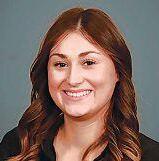
In his role at Enclave, Ryan will oversee construction projects from start to finish while supporting Enclave’s mission of creating spaces where people are inspired to do their best work and live their best life.
ApeX Engineering Group welcomes new HR manager
FARGO, N.D. • Lisa Markert joins Apex Engineering Group as the company’s new human resources manager located in the Fargo, N.D., office.
Markert has more than 20 years of human resource experience, most recently working for the Fargo Jet Center.
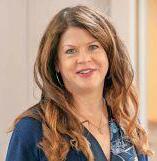
PrairiePeople JANUARY 2021 VOL 22 ISSUE 1
Brian Schumacher
Collin Ryan
Lisa Markert
Troy Borud Krista Hanneman
Bethany Fraase
26 TWITTER.COM/PRAIRIEBIZ FACEBOOK.COM/PRAIRIEBUSINESS PRAIRIEBUSINESSMAGAZINE.COM
Bolton & Menk welcomes new senior
transportation project manager
Essentia Health welcomes new doctor

FARGO, N.D. • Dr. Rory Farnan, an interventional cardiologist, is now seeing patients at Essentia Health Heart and Vascular Center in Fargo.

Rory Farnan Mike bittner
FARGO, N.D. • Mike Bittner has a genuine love of building relationships and an affinity for innovation. Throughout his 10-year career, he has developed a long list of accomplishments working in seven different states for clients including DOTS, cities, counties, metropolitan planning organizations and private entities. He focuses on identifying emerging trends and staying nimble enough to capitalize on these trends.
As a senior transportation project manager for Bolton & Menk, Bittner will serve a key role in the strategic visioning of the firm’s transportation services. With the tools available to support him, he will advance transportation technology for the future.

First International Bank & Trust hires landman

BISMARCK, N.D. • First International Bank & Trust is proud to welcome Jeffrey L. Skaare, who will serve as Mineral & Land Services Business Development landman.
Jeffrey Skaare
Skaare is a North Dakota-licensed attorney who has dedicated his career to oil and gas development, bringing more than 15 years of industry experience to his role at FIBT. He is well-known and respected in the industry, having previously held numerous positions, including land manager, director of operations, and later director of business development at an
Starion Bank hires new CBO

Dave Hoekstra
FARGO, N.D. • Starion Bank has hired Dave Hoekstra as the new chief banking officer. Hoekstra was hired at the beginning of November and comes to Starion with more than 25 years of community banking experience in North Dakota and the Midwest. His extensive experience includes previously serving as a market president and chief credit officer of a local community bank where his responsibilities included bank management, credit administration, special assets, and loan
Dr. Farnan received his medical education at Royal College of Surgeons in Ireland and completed his residency in internal medicine at the University of Utah in Salt Lake City.
Farnan completed fellowships in cardiovascular disease and interventional cardiology at Cooper University Hospital in Camden, N.J. He is board certified by the American Board of Internal Medicine in internal medicine, cardiovascular disease and interventional cardiology.
independent energy company. He also owned a complete mineral and gas land services company, managing over 50 landmen and support staff providing title, leasing, curative, due diligence, seismic permitting, mapping, surface use, and land records.
He is a member and certified professional landman with the American Association of Professional Landmen, and has served on the Board of Directors for the North Dakota Petroleum Council, is on the Board of Directors and is past president of the Landman Association of North Dakota, and is a member of the Wyoming Association of Professional Landmen.
review. He also served on the bank Board of Directors.
Hoekstra is a CPA (inactive) and a graduate of Moorhead State University with a degree in accounting. As CBO, Hoekstra will serve as a member of Starion’s executive leadership team while providing oversight to the Bank’s sales and community banking functions. From the North Dakota Safety Council to Bismarck Youth Baseball, Hoekstra is actively involved in a number of Bismarck/Mandan community organizations.
27
Q.








































INSIGHTs & INTUITION
What is something business related that you and your team hope to accomplish in 2021 that you were not able to in 2020?
 Spencer Hilde
Senior Project Manager
Spencer Hilde
Senior Project Manager
















































































































 McGough Construction Fargo, N.D.
McGough Construction Fargo, N.D.
At McGough Construction, we are hopeful in 2021 we will be able to safely gather once again to celebrate project milestones and successes with our clients, project stakeholders, and team members.
We have been fortunate this past year to continue with our work, building and providing construction services throughout the region. However, our traditional project events and gatherings such as groundbreaking ceremonies, group site visits and walkthroughs, project milestone celebrations, and grand openings have needed to be scaled back significantly or eliminated entirely.
While events and celebrations are not why we strive to deliver our projects safely, on time, and on budget to our clients, they are a great opportunity for project teams to stop and reflect on the progress and positive impacts of their hard work. It is our hope that in 2021 we can safely return to enjoying and participating in these events with our clients and partners.
Gate City Bank provides a welcoming atmosphere and commitment to making the lives of our customers and team members better by investing in them and their communities for a better way of life. While the COVID-19 pandemic presented challenges for everyone in 2020, I’m thankful to say that our team members persevered by continuing to not only deliver innovative products and services but show incredible support for the communities where we live and work. This support came in many forms: surprise food deliveries to health professionals and other essential workers, blue tote bag donations to schools to support at-home learning, and financial assistance to customers, to name a few. Giving back is at the core of Gate City Bank’s culture and key to providing a better way of life for our communities. Gate City Bank is incredibly optimistic about 2021, during which we will continue to find new and safe ways for our team members to get involved and volunteer.
Lif eisd riven by purpose
Kevin Hanson President & CEO Gate City Bank Fargo, N.D.



28 TWITTER.COM/PRAIRIEBIZ FACEBOOK.COM/PRAIRIEBUSINESS PRAIRIEBUSINESSMAGAZINE.COM
Insights&Intuition JANUARY 2021 VOL 22 ISSUE 1
SPONSORED BY
There’s no better time than now to revitalize Widseth’s strategic plan. Navigating the pandemic took our attention in 2020 but also provided the impetus to revisit this effort.
In recent years, we focused internally to build a strong firm culture, punctuated by an updated brand identity. Little did we know then how important that foundation would be, helping us weather these tumultuous times. Now we’re ready to leverage our unified identity to maximum benefit for our clients.


The opportunity 2020 brought was the shift in how our teams collaborate with each other and with our clients. Widseth is teeming with innovators who have found new ways to connect with clients and whose ideas and efforts will continue to carry us forward. Our strategic plan will set the course for maintaining focused client relationships and support the nimble work environments needed to serve them.
We’ve retained an amazing facilitator and have begun to establish a fresh outlook for 2021. By the end of the first quarter we’ll have a strategic plan that guides us through and beyond this juncture and will ensure our continued success.
Kevin J. Donnay, AIA President Widseth Baxter, Minn.
 Michelle Mongeon Allen CEO JLG Architects Minneapolis, Minn.
Michelle Mongeon Allen CEO JLG Architects Minneapolis, Minn.

While the pandemic and ensuing social unrest and economic downturn will ultimately define 2020 for posterity, they came at a time when we were already confronted with both a major generational shift in our society and a technological revolution. And so, at JLG we entered 2020 primed for transformational change.

But when COVID-19 hit in March, we made near-term adjustments to our plans in order to preserve our core of top talent and then doubleddown on the strategic initiatives that we believed would best position JLG, our clients, and our communities to address the added challenges of uncertainty, fiscal disruption, and social isolation. In 2021 we look forward to creating opportunity amidst these obstacles by:
• Partnering with our clients and communities to actively advance planning and projects based on greater confidence in the economy and on sound public health and fiscal policy;






• Actively engaging our communities and initiating a purposeful initiative to enrich through diversity;
• Leveraging our strategic investments, especially technological innovations focused on enriching client outcomes and experiences;
• Continuing to help our customers capitalize on the agility and efficiencies realized through virtual collaboration; and


















• Advancing health and wellness through a renewed appreciation for the value of in-person engagement.

29
FIBT.com
UNEMPLOYMENT RATE
Total nonfarm payroll employment rose by 245,000 in November, and the unemployment rate edged down to 6.7% nationwide, according to the U.S. Bureau of Labor Statistics. These improvements in the labor market reflect the continued resumption of economic activity that had been curtailed due to the coronavirus pandemic and efforts to contain it. However, the pace of improvement in the labor market has moderated in recent months. In November, notable job gains occurred in transportation and warehousing, professional and business services, and health care. Employment declined in government and retail trade.
CONSUMER PRICE INDEX
Prices for U.S. imports ticked up 0.1% in November, according to the U.S. Bureau of Labor Statistics, after edging down 0.1%t in October. Higher fuel prices in November more than offset lower nonfuel prices. U.S. export prices also rose in November, increasing 0.6% following advances of 0.2% in October and 0.6%t in September.
AIR TRAFFIC
U.S. airlines carried 27.1 million systemwide (domestic and international) scheduled service passengers in September 2020, seasonally-adjusted, according to the Bureau of Transportation Statistics, up 14.1% from August. The numbers, released in December, were the latest released by the BTS. It also reported 25.5 million domestic passengers and 1.6 million international passengers on U.S. airlines’ flights in September.
Passengers on US Airlines in September 2020 27.1 Million
Same month of previous year: -59 M

One Month: 3.4 M

Seasonally Adjusted
AS SISTING OV ER
2,600
2,600 BUSINESSESWITH ERGGRANT S








30 TWITTER.COM/PRAIRIEBIZ FACEBOOK.COM/PRAIRIEBUSINESS PRAIRIEBUSINESSMAGAZINE.COM Heretosupportbusinessesandcommunitiesinamoreprosperous2021.
Heretosupportbusinessesandcommunitiesinamoreprosperous2021.
BUSINESSESWITH ERGGRANT S AS SISTING OV ER
Source: U.S. Bureau of Transportation Statistics Sept 17 September 2017 69.4 M September 2020 27.1 M August 2020 23.8 M 73.9 M Hurricane Florence Jan 18 May 18 Sept 18 Jan 19May 19 Sept 19 Jan 20 May 20 Sept 20 JANUARY 2021 VOL 22 ISSUE 1 ByTheNumbers SPONSORED BY
Source: U.S. Bureau of Labor Statistics 2.5 5.0 7.5 10.0 12.5 15.0 17.5 Percent Nov 2010Nov 2012Nov 2014Nov 2016Nov 2018Nov 2020 Source: U.S. Bureau of Labor Statistics -30.0 -20.0 -10.0 0.0 10.0 20.0 30.0 Percent Nov 2010Nov 2012Nov 2014Nov 2016Nov 2018Nov 2020





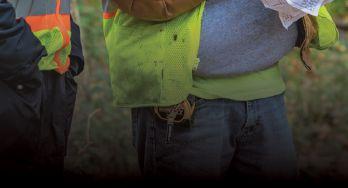




31 FoodserviceSupplies JanitorialSupplies &Equipment Packaging Materials Office Supplies First Aid&SafetySupplies We take apersonalinterestinthe workbeingdonearoundus. Andattheendoftheday, we’re Real Peopleoffering Real Solutions. Bolton-Menk.com Liberty isgrowing! Exploreourcareer opportunities. LibertyBusiness.com 701.595.2057 APPLYNOW Premier Business Magazine of the northern plains Check out next issue coming to stands in February
HE AR T & VA SC UL AR CA RE
Whenyou’vebeendiagnosedwith alife-threateningheartcondition,believethatyoucan findaward-winning cardiaccarerighthere.Fromearlydetectiontotreatment,ourexpertcareteamspartnerwithyou,offeringaccess toadvancedtreatmentsininterventionalcardiology,structuralandvalve diseaseandthelatestclinicaltrials.

Becausewebelievethatyoucandothis —andthatyoudon’thavetodoitalone.
Region’s OnlyAccredited ChestPainCenter with PCI&Resuscitation*
AmericanCollege ofCardiology
Platinum Performancefor HeartAttackCare NCDR
STEMI ReceivingCenter Designation
2020GoldPlus Level for HeartFailureCare
AmericanHeart Association
BlueDistinction DesignationforQuality andCostEffective CardiacCare


BlueCrossBlueShield

rt &Vasc ularCent er 701-36 4- BE AT EssentiaHealth.org Believethatyour best is yettocome.
Hea









































 By Prairie Business
By Prairie Business



 By Andrew Weeks
By Andrew Weeks



 By Andrew Weeks
By Andrew Weeks

























 Spencer Hilde
Senior Project Manager
Spencer Hilde
Senior Project Manager




 McGough Construction Fargo, N.D.
McGough Construction Fargo, N.D.



 Michelle Mongeon Allen CEO JLG Architects Minneapolis, Minn.
Michelle Mongeon Allen CEO JLG Architects Minneapolis, Minn.




























